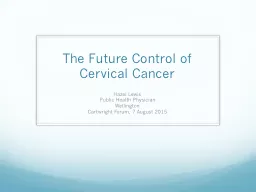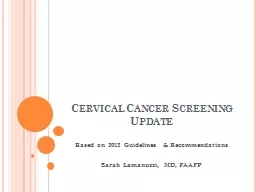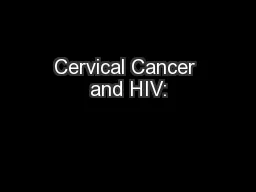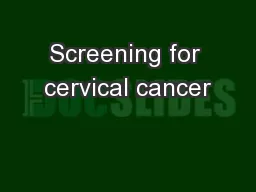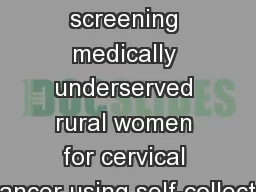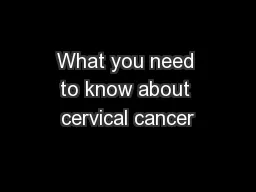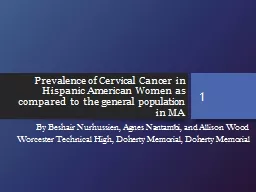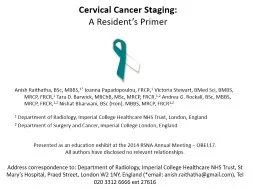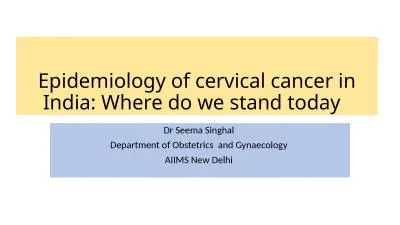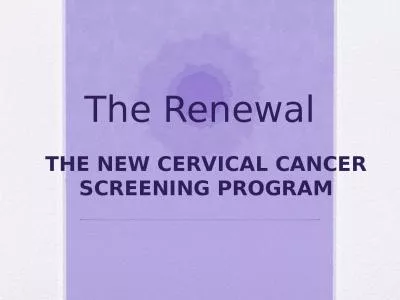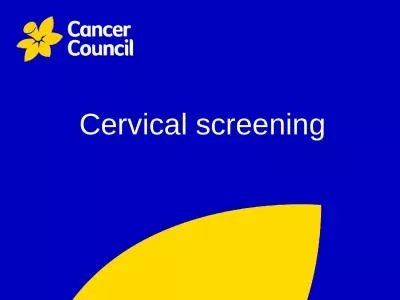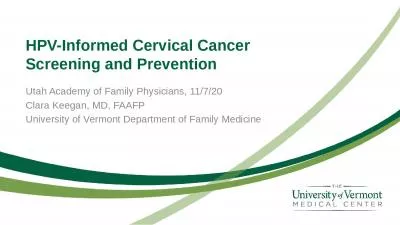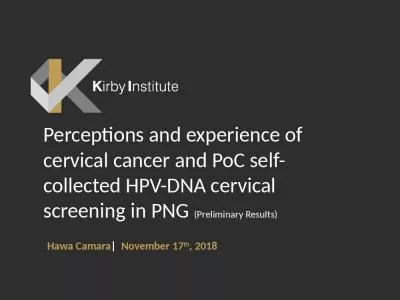PPT-The Future Control of Cervical Cancer
Author : giovanna-bartolotta | Published Date : 2016-08-16
Hazel Lewis Public Health Physician Wellington Cartwright Forum 7 August 2015 NCSP R centralised 1965 1990 2000 1988 Cartwright Report NCSP established In 14
Presentation Embed Code
Download Presentation
Download Presentation The PPT/PDF document "The Future Control of Cervical Cancer" is the property of its rightful owner. Permission is granted to download and print the materials on this website for personal, non-commercial use only, and to display it on your personal computer provided you do not modify the materials and that you retain all copyright notices contained in the materials. By downloading content from our website, you accept the terms of this agreement.
The Future Control of Cervical Cancer: Transcript
Download Rules Of Document
"The Future Control of Cervical Cancer"The content belongs to its owner. You may download and print it for personal use, without modification, and keep all copyright notices. By downloading, you agree to these terms.
Related Documents

